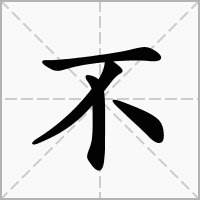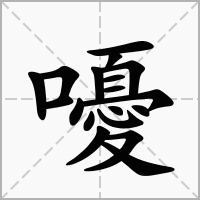不嚘的意思解释
不嚘拼音:bù yōu
不嚘注音:ㄅㄨˋ ㄧㄡ

不嚘解释
见“不嗄”。
详细解释
见“ 不嗄 ”。
字义解释
 bù fǒu
bù fǒu 1.用在动词、形容词和其他副词前面表示否定:~去。~能。~多。~经济。~一定。~很好。2.加在名词或名词性词素前面,构成形容词:~法。~规则。3.单用,做否定性的回答(答话的意思跟问题相反):他知道吗?——~,他不知道。
 yōu
yōu1.语未定的样子。2.气逆。
不嚘拼音:bù yōu
不嚘注音:ㄅㄨˋ ㄧㄡ

见“不嗄”。
见“ 不嗄 ”。
 bù fǒu
bù fǒu 1.用在动词、形容词和其他副词前面表示否定:~去。~能。~多。~经济。~一定。~很好。2.加在名词或名词性词素前面,构成形容词:~法。~规则。3.单用,做否定性的回答(答话的意思跟问题相反):他知道吗?——~,他不知道。
 yōu
yōu1.语未定的样子。2.气逆。